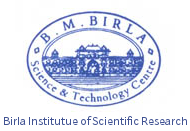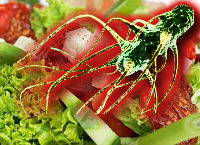 |
 |
 |
 |
 |
 |
Food Pathogens
Food-borne pathogens are the main vehicle to cause food-borne illness. Mainly food-borne illness is associated with infection caused by microbial pathogens that have entered the food chain at some time by farm to fork. Pathogens can be unwittingly acquainted via a food source. There are an enormous number of microbial pathogen: Bacteria (E. coli, Salmonella, Campylobacter, Clostridium, Bacillus cereus), viruses (Norwalk agent, Rotaviruses), and parasites (Giardia, Entamoeba histolytica, Cryptosporidium parvum) that cause infection and food-borne illness. Most of the time infections result in diarrhea or dysentery, nausea, vomiting, and abdominal cramping. Microbial toxin or Secondary metabolites are also responsible to cause food-borne illness. Mainly the cases of food-borne illness are self-limiting and mild but occasionally they may lead to cause serious health hazard or may result in death. According to WHO report about one-third of people in developed countries are affected by food-borne pathogens each year. In Developing countries this figure is significantly higher. Globalization of the trade means that contaminated food has the potential to spread widely. Therefore food-Pathogen became a challenge for Global Public health.